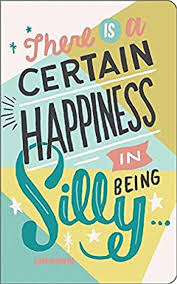 | > Other English exercises on the same topics: Frequent mistakes | -ing | Present [Change theme] |
| > Similar tests: - Placement test : grammar for beginners - Two presents: present continuous, present simple - Placement test beginners: Check your spelling - Present simple - Past simple or present perfect - Present simple or continuous - Modal: may/might - Present simple | |
| > Double-click on words you don't understand |
Present continuous or simple present - English lesson
"Knowing the difference between the two presents and using the one or the other!?
🤩  THAT's EASY! We don't need a lesson to do that! We've learnt the presents
THAT's EASY! We don't need a lesson to do that! We've learnt the presents
in our first year, and at the beginning of the year, even!"
That may be why even in High School we still don't know how to use them correctly ! 
To be frank, we mostly use the simple present... because, as its name declares,
at least, IT is SIMPLE!
Let's see the "other present"! 
I) The -ING form or 'Present Continuous': how to build the -ing present?
use the auxiliary BE + -ing (added to the verb base).
The short form is used more often than the full form, especially when speaking.
- I'm working! Is she working? He isn't working.
II) When to use it?
It is used:
* for events happening at the time of speaking:
- Look! He's washing his shirt! Unbelievable!
* To describe a position:

He is standing
- Paul is sitting in the garden and Julia is lying on the lawn.
* When describing scenes in pictures:
- The man is looking at a girl and smiling.
 the present continuous enables the speaker to express personal commentaries.
the present continuous enables the speaker to express personal commentaries.
It gives a subjective point of view.
- You're drinking again! (In my opinion, it's too much!)
* It can be a judgement :
- You're being silly!

* When 'always' is added, it can show irritation:
- He's always cheating when we play...
* With an adverb of time, it deals with Plans and Arrangements:
The present continuous refers to the future when we talk about plans and arrangements:
- He's leaving tomorrow.
III) Some VERBS cannot be used in the Continuous Form:
BE and HAVE and other verbs showing a state of mind, describing feelings,
appearances, or verbs of perception: believe, understand, mean, agree,
know, remember, think, want, like, hate, see, look, seem.

 Some of these verbs have several meanings and can then be put in the -ing form.
Some of these verbs have several meanings and can then be put in the -ing form.
a) THINK:
* in the simple present, it refers to 'the intellectual'
- I don't think she lied. (I believe she told the truth)
* when 'think' means 'to consider a possible action or plan', it can then be in the present continuous.
- I'm thinking of going to live abroad.
b) SEE:
* is used in the simple present to express a perception, an intellectual ability.
- I see what you mean. (I understand what you mean!)
* in the -ing present, it means 'meet'.
- I'm seeing her tomorrow at last!
c) HAVE:
* in the simple present, it means 'to own'.
- Do you have a car? I have two.


* HAVE is used in the -ing present in some expressions 'have dinner/ a bath' and
'have an affair'/ 'have a laugh'.
- Is he having lunch with us today?

Well! We'll have to check whether the conditions of use given above are not met
before we decide to use "our beloved simple present" systematically.
Let's the -ing present take its place!
Now, go for the test ! 
English exercise "Present continuous or simple present" created by here4u with The test builder. [More lessons & exercises from here4u]
Click here to see the current stats of this English test
End of the free exercise to learn English: Present continuous or simple present
A free English exercise to learn English.
Other English exercises on the same topics : Frequent mistakes | -ing | Present | All our lessons and exercises


